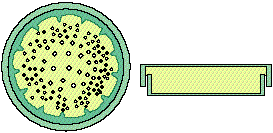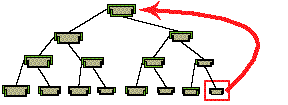
"Why were there so many krill?", asked the storyteller.
Our patient listener already knew the answer, or at least part of the answer,
to that question. After all, krill are animals too, and they have to eat
something.
But our listener didn't want to guess at what the krill ate, and maybe sound
dumb or stupid. The storyteller would give the answer anyway, so the listener
just mumbled........
"Why?"
"Diatoms," said the storyteller. "Tiny microscopic plants, billions and billions of them, so thick that the ocean water was a puree (a thick kind of soup)."

Each diatom plant cell is covered by two lacy little plates (called valves)
which are made of a mineral called opal. Opal is made of the elements silicon
and oxygen. One valve of a diatom is a little smaller than the other valve
and it slips part way inside the other, like a petri dish, if you have ever
seen one. Be careful if you do see one. Not a petri dish! A diatom, because
diatoms have been known to turn unsupecting people into diatomists.
Diatoms learned how to take a short cut when it comes to making more diatoms.
They just split in half and make a new valve of lacy opal to fit inside
the old one. One diatom quickly becomes two, two become four, and four become
eight, and so on. The vales are smaller after each split and this is a problem.
Because each new valve is smaller than the old one, the tiny plants, which
are already very tiny, get smaller with every split. When they get impossibly
small, they throw away the valves, grow bigger, and start over.

This kind of splitting, when two become four and four become eight, makes
lots of diatoms...in a hurry. In a matter of hours, by splitting, diatoms
can "bloom" and turn clear water into soup.
"So," said the storyteller, I can truly say..........
The Blue Whale is the biggest animal that ever lived in the world because the ocean water near Antarctica is loaded with diatoms."
Previous Page.......................Next Page